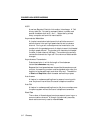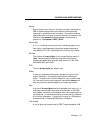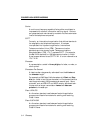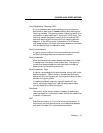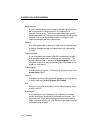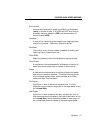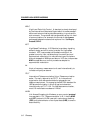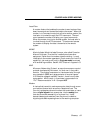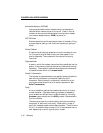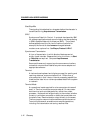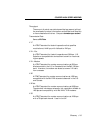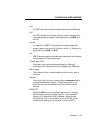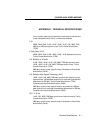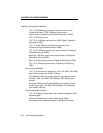
COURIER HIGH SPEED MODEMS
J-10 Glossary
Nonvolatile Memory (NVRAM)
User-programmable random access memory whose data is
retained when modem power is turned off. Used in Courier
modems to store a user-defined default configuration loaded
into random access memory (RAM) at power on.
OFF/ON Hook
Modem operations which are the equivalent of manually lifting
a phone receiver (taking it off hook) and replacing it (going on
hook).
Online Fallback
A feature that allows high speed error-control modems to mon-
itor line quality and fall back to the next lower speed if line
quality degrades. The modems fall forward as line quality
improves.
Originate Mode
A state in which the modem transmits at the predefined low fre-
quency of the communications channel and receives at the high
frequency. The transmit/receive frequencies are the reverse of
the called modem which is in Answer mode.
Parallel Transmission
The transfer of data characters using parallel electrical paths for
each bit of the character, for example, 8 paths for 8-bit
characters. Data is stored in computers in parallel form, but
may be converted to serial form for certain operations. See
Serial Transmission.
Parity
An error-detection method that checks the validity of a trans-
mitted character. Character checking has been surpassed by
more reliable and efficient forms of block-checking, including
Xmodem-type protocols and the ARQ protocol implemented in
Courier modems.
The same type of parity must be used by two communicating
computers, or both may omit parity. When parity is used, a
parity bit is added to each transmitted character. The bit's value
is 0 or 1, to make the total number of 1's in the character even or
odd, depending on which type of parity is used.



